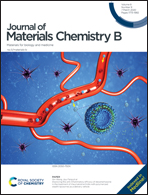Stimuli-responsive nanoparticle-assisted immunotherapy: a new weapon against solid tumours
Abstract
Although significant improvements in cancer treatment have led to a longer survival period, the death rate of patients with solid tumours has not changed during the last decades. Most researchers are currently concentrating on defining the mechanisms of the different resistance pathways activated by tumour cells; meanwhile, the role of limited drug distribution within tumours has been neglected. The application of nanotechnology in medicine offers unexplored opportunities for realizing a new generation of anticancer therapies that can overcome the physical hindrances that characterize solid tumours. Indeed, surface-engineered nanoparticles (NPs) (both organic and inorganic) have been used as powerful tools in cancer therapy. Particularly, Au NPs have been utilized to develop a new drug-free treatment, photo-thermal therapy (PTT), due to their stimuli-responsive properties. PTT combined with immunotherapy represents a major breakthrough in the fight against malignant solid tumours. In this review, we provide a complete overview of the synergistic approaches based on PTT and immunotherapy, considering the selection, design, and functionalization of the NPs and their thermo-optical properties, moving to in vivo studies and finally to clinical trial applications in patients suffering from solid tumours.



 Please wait while we load your content...
Please wait while we load your content...